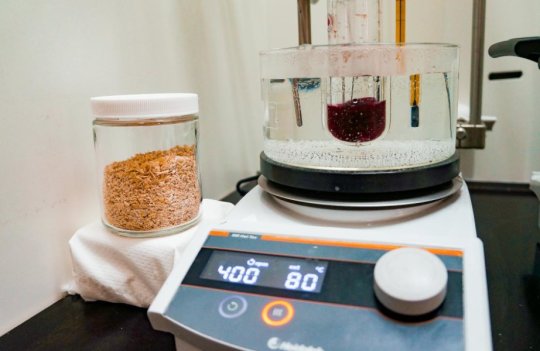[ad_1]
Producing fuels and chemicals from biomass (wood, grasses, etc.) is one of the most promising solutions for building a renewable economy. The process involves breaking down, or “deconstructing,” plants to produce single carbohydrates, mostly in the form of simple sugars like xylose and glucose. But even though these sugars are valuable, current processes for plant deconstruction often end up degrading them.
Now, the lab of Jeremy Luterbacher at EPFL has developed a chemical method that stabilizes simple sugars and prevents them from being degraded. This method could mean that chemists no longer have to balance deconstruction of the plant with avoiding degradation of the product.
The new method changes the chemical susceptibility of the sugars to dehydration and degradation by latching aldehydes onto them. The process is reversible, meaning that that the sugars can be retrieved after deconstruction.
The chemists tried their method on beechwood. First, they turned it into pulp using a paper-making technique called organosolv, which solubilizes wood into acetone or ethanol. But in order to latch aldehydes onto the sugars, the scientists mixed the beechwood with formaldehyde.
With this approach, they were able to recover over 90% of xylose sugars as opposed to only 16% xylose without formaldehyde. When they broke down the remaining pulp to glucose, the carbohydrate yield was over 70%, compared to 28% without formaldehyde.
“Before, people had always been looking for often expensive systems that limited sugar degradation,” says Jeremy Luterbacher. “With stabilization, you worry less about this degradation and this frees you up to develop cheaper and faster transformations for plants, potentially accelerating the emergence of renewable consumer products.”
Story Source:
Materials provided by Ecole Polytechnique Fédérale de Lausanne. Original written by Nik Papageorgiou. Note: Content may be edited for style and length.
[ad_2]















